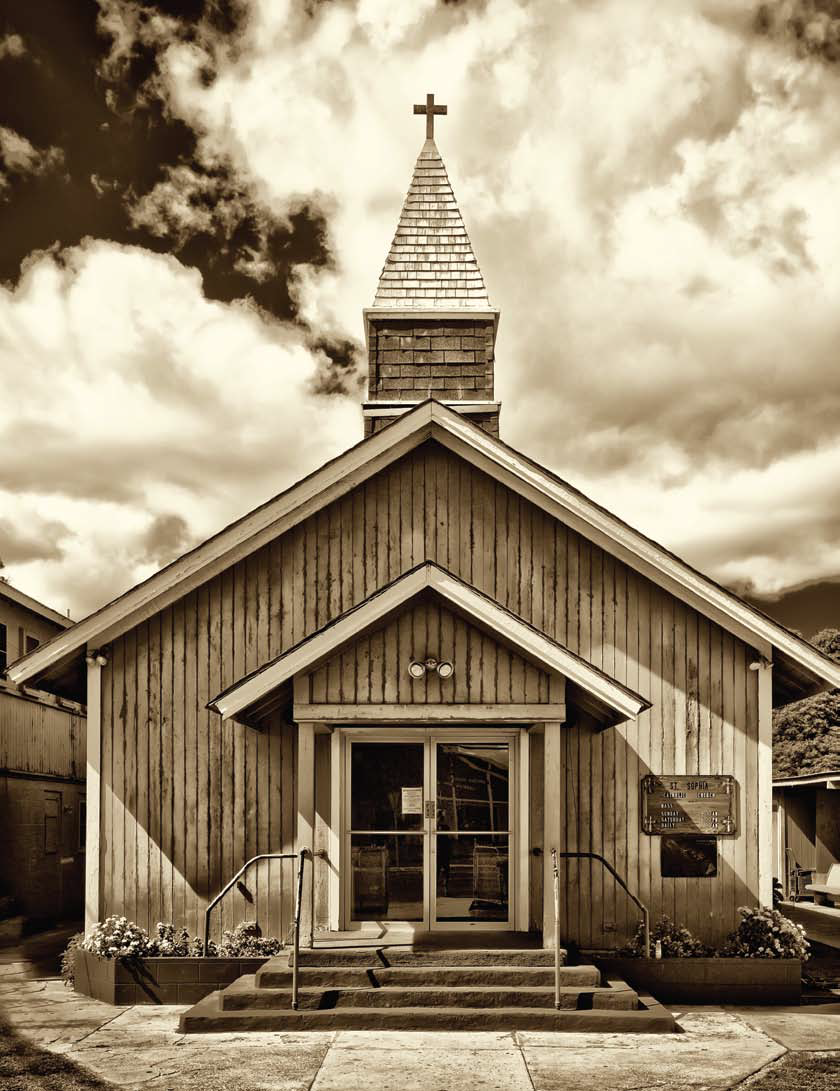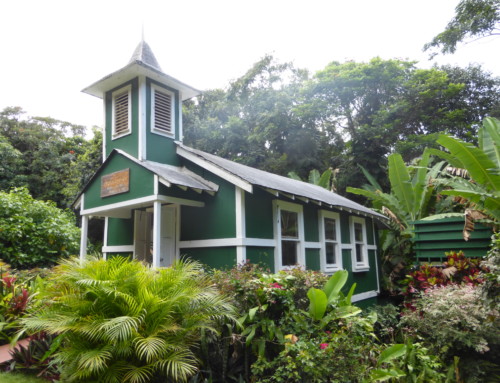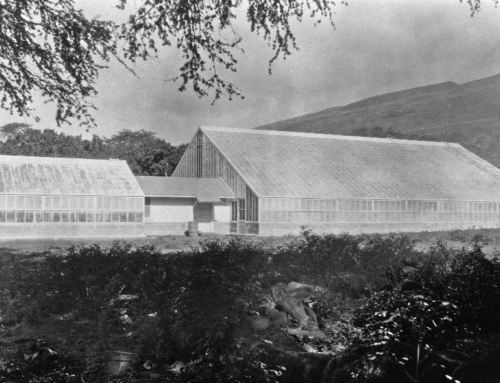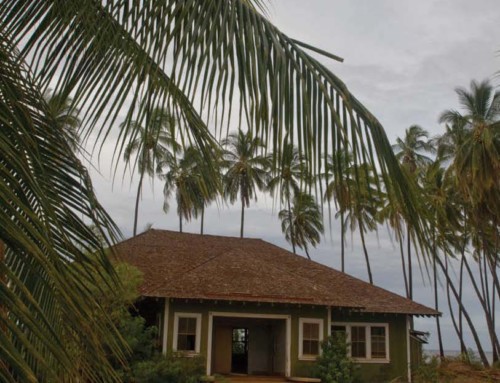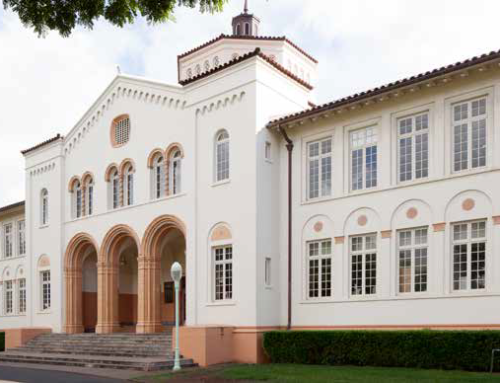Photos: Courtesy of Richard Cooke, III
UPDATE: LOST IN 2010
On February 10, 2010 the church mysteriously burned; demolition of the structure was planned for later that year.
LISTED AS ENDANGERED IN 2008
Article Written By: Michael Keany, HONOLULU Magazine
What was it?
Pineapple may have disappeared from Moloka i as an industry, but the small Catholic church built in 1937 to serve the sakadas (Filipino plantation workers) still stands in Kaunakakai.
Molokai planner Nancy McPherson says the church is an increasingly valuable artifact from Molokai’s plantation era. A lot of significant buildings have been demolished by neglect, she says. St. Sophia is one of the last ones left. Interestingly, the church is named not after a Catholic saint, but after Sophia Cook, the wife of the Molokai Ranch manager.
What threatened it?
The congregation wants to replace the aging structure with a new one. Maria Sullivan, who is spearheading the fundraising efforts, says it s not meeting the needs of the 300 families who attend. It’s termite ridden; it’s too small; there are structural problems; people in wheelchairs can’t access the building. It is a sad situation.
Even the church’s name will be lost in the replacement; the new church will be called the Blessed Damien Church, in anticipation of the canonization of Damien.
At this point, the church has raised $1.3 million of the $3 million required for the project, and hopes to hold its first service in the new church on Christmas Eve, 2011.
What could have been done?
Historical preservation advocates such as Kiersten Faulkner, executive director of the Historic Hawaii Foundation, hope that there’s still time to find a compromise. The congregation of immigrants worked and saved to build a fitting sanctuary, she points out. A meaningful way to honor their contributions would be to restore the historic church and to build a compatible addition or annex to accommodate the needs of the pilgrims.


